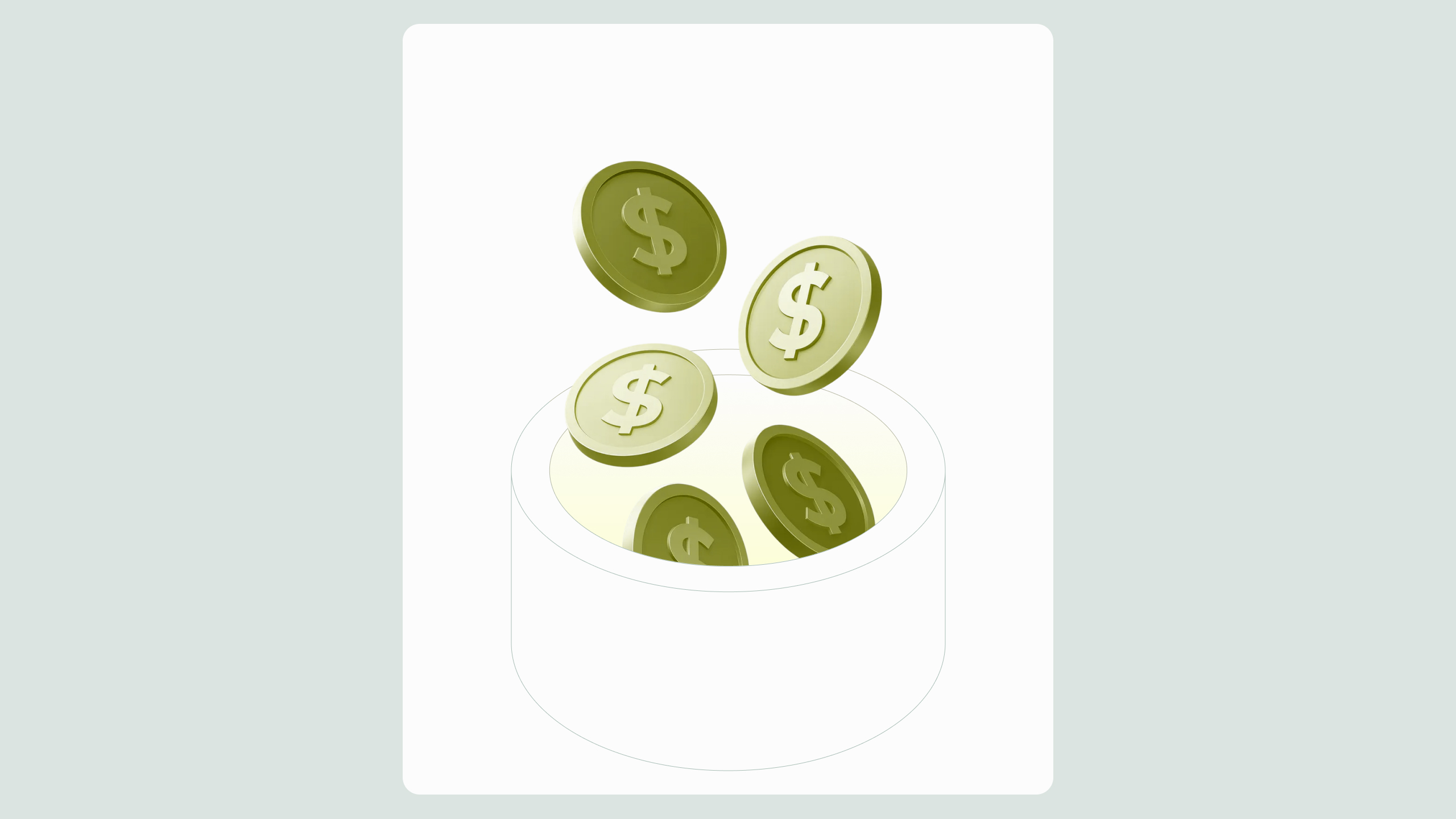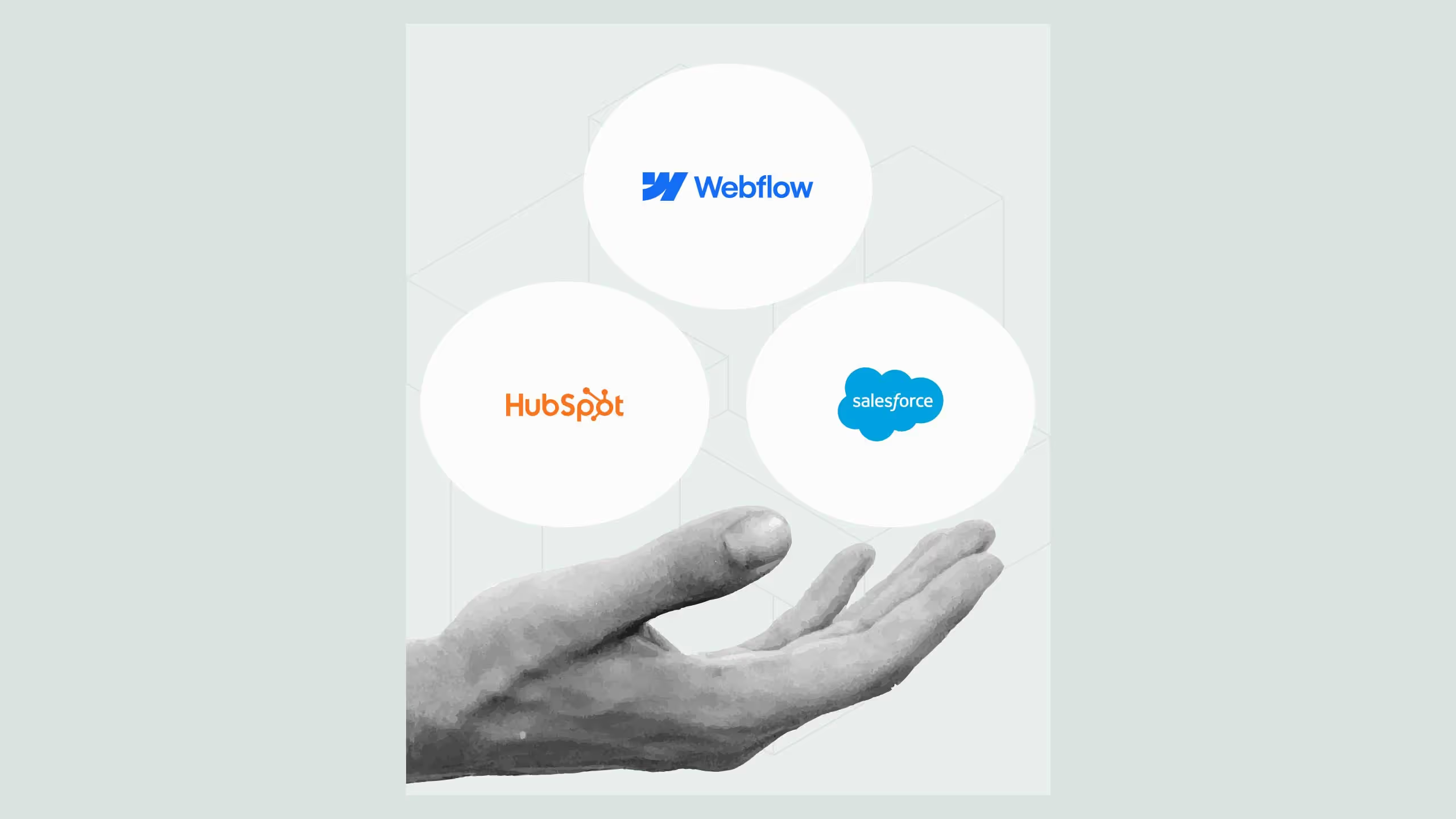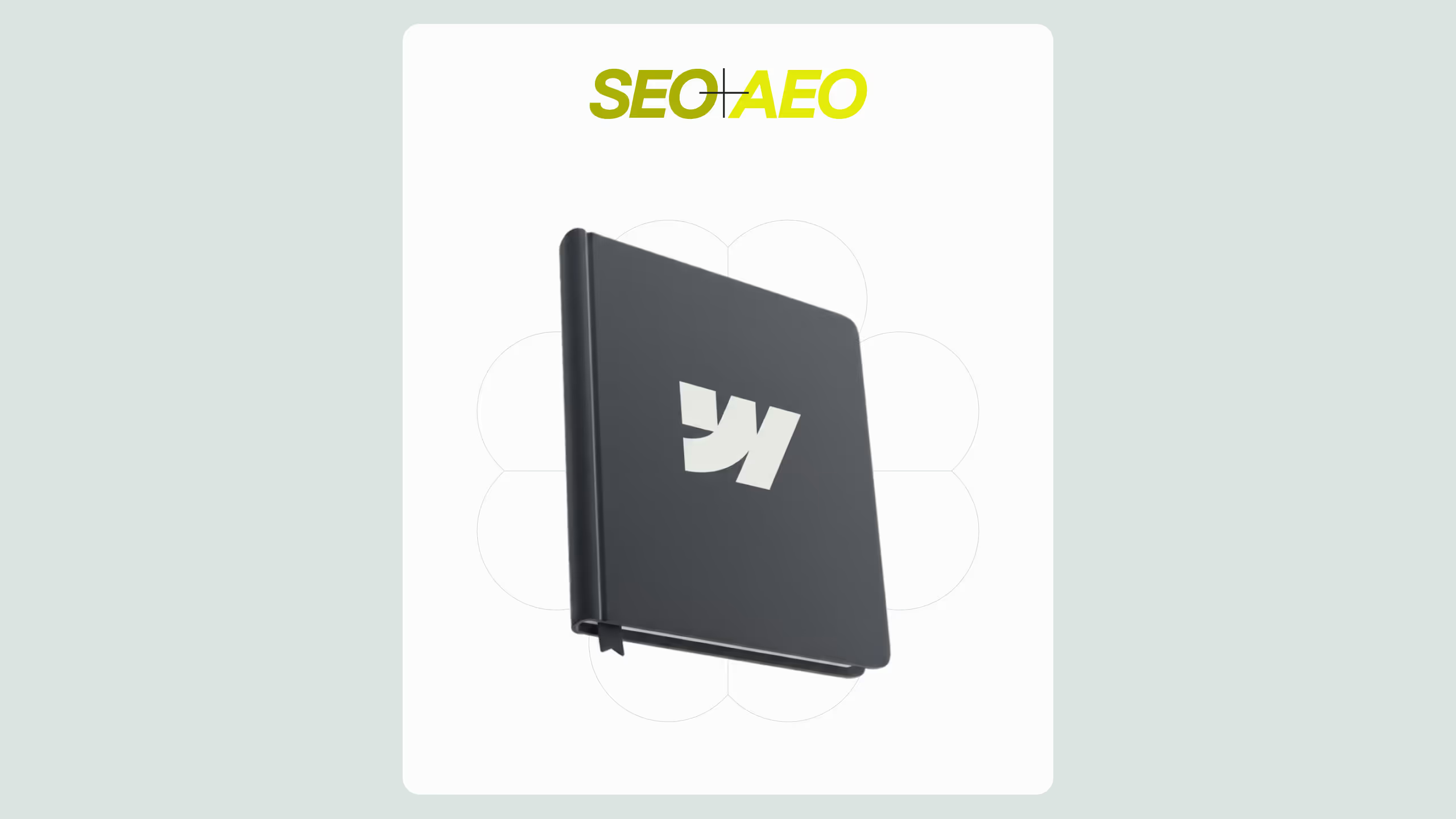Webflow Sales Funnel Optimization Strategy Guide

Funnels underperform not because teams lack traffic, but because users encounter friction that interrupts decision-making. The biggest shift comes from combining UX clarity, behavior data, and structured messaging into a cohesive Webflow sales funnel optimization strategy rather than treating page design as the goal. When teams simplify user flows, reduce cognitive load, and support decisions with credible proof, conversion rates typically increase two to four times.
Improving a Webflow sales funnel is ultimately about removing unnecessary friction. Buyers want clarity. They want to feel confident that they’re moving in the right direction, at the right pace, with the right information. When this experience is smooth, conversions increase, because the user journey mirrors how people naturally make decisions.
In high-pressure SaaS and B2B environments, marketing and sales teams need a platform that supports fast experimentation without waiting for developers to adjust layouts, CTAs, or forms. Webflow fills that gap. It allows marketers to design deeply optimized buyer journeys, deploy tests instantly, and modify funnel elements in minutes rather than days.
This article outlines a Webflow sales funnel optimization strategy specifically created for teams focused on predictable conversion paths, pipeline acceleration, and measurable performance. You’ll see how Webflow’s CMS, no-code flexibility, and integrations let you architect a funnel that adapts quickly and reflects buyer behavior at every stage.
When done right, a Webflow funnel feels natural and helpful, not forced. It becomes a strategic engine powering conversions across your entire pipeline.
Why a Webflow Sales Funnel Outperforms Traditional CMS Approaches
Sales teams choose Webflow because it removes the bottleneck between concept and execution. Traditional CMS platforms, such as WordPress or HubSpot CMS, often require developer intervention for nearly every significant change. Without this, modifications can negatively impact the UI, slow down site performance, or create conflicts with other plugins, making routine updates challenging without developer support. Webflow eliminates this barrier and allows marketers to reshape landing pages, CTAs, messaging, layouts, tests, and content without waiting days or weeks for engineering.
Key advantages:
- 70% faster iteration speed
According to recent surveys of no-code usage in marketing teams, Webflow reduces “concept → execution” cycles by up to 70%, allowing teams to ship experiments faster.
- Uplift in conversion rate from UX improvements
A study by Forrester found that better UX design can raise conversion rates by up to 200%. Webflow’s design control helps teams achieve this.
- Improved load speed → more conversions
Google research shows that every +1 second in load time can reduce conversions by up to 20%. Webflow’s native performance optimizations matter here.
Combined, these advantages make Webflow uniquely suited for a Webflow sales funnel optimization strategy built for modern growth teams.
Map the Full Buyer Journey
The most effective funnels do not happen by accident. They happen when teams map the journey from landing page to thank-you page, and align design, content, and flow intentionally.
- Full Design Control + Brand Consistency
Webflow gives you pixel-perfect control over every touchpoint: landing pages, lead-generation forms, “thank you” pages, and checkout flows. That ensures your funnel feels cohesive and on-brand, which builds trust with prospects. - Speed & Performance
Fast-loading pages, clean code, and Webflow’s hosting infrastructure help reduce friction. We mentioned that before, but when pages load quickly, you reduce bounce rates, especially at critical conversion stages. - Dynamic Content and Interactions
Interactive demos, modular content sections, and micro-interactions (such as animations and scroll effects) can be used to guide users through each stage of the funnel. These elements help maintain attention and improve overall engagement.
- Native Forms + Seamless Integrations
Webflow’s forms are robust and flexible. You can hook them up to CRMs (like HubSpot), email tools, or other automation platforms via Zapier or custom integrations. That means capturing leads (MQLs or SQLs) is clean, reliable, and tied into your broader sales process.
- Data-Driven Optimization
Webflow supports analytics tools, and combined with conversion-analysis techniques, you can continuously refine the funnel. As Webflow’s own blog outlines, analyzing where people drop off helps you remove friction and improve UX.
- Testing & Personalization
While Webflow lacks built-in A/B testing, it integrates easily with tools like Google Optimize or Optimizely. This allows you to test CTAs, layout, copy, and experiment, all to improve conversion.
- Scalability
Whether it’s a simple offer or a multi-step funnel for a high-ticket product, Webflow’s flexibility scales effectively. Additionally, CMS-powered content such as blog posts and case studies can be reused to nurture prospects in the middle of the funnel.
Webflow lets you guide someone from first touch to final action without disconnects, inconsistencies, or friction that typically cause drop-off. When the funnel and buyer journey are synced, the story stays clear, the value stays front-and-center, and prospects move naturally from curiosity to confidence. Whether someone is discovering your brand, solution, or ready to become a qualified lead, your team already has tools to match the experience to their mindset. And that alignment, clean design, fast performance, tailored content, and seamless data handoff, is ultimately what strengthens trust and lifts conversions across the entire pipeline.
To wrap it up, by having all the above, sales and marketing teams are not only improving their independence and collaboration across the teams, they are also more efficient to follow buyers through the pipeline. By clearly defining the buyer journey, recognizing when a lead becomes an SQL, and structuring your pipeline around Webflow’s strengths, you create a funnel that is built to grow.
Use Visual Hierarchy to Guide User Attention
When the funnel structure and visual design are closely aligned, potential customers are guided with clear intention. That 0.05 second first impression reflects how quickly the brain makes decisions. In a Webflow-built funnel, each split second can be intentionally designed, giving every stage the visual clarity and structure needed to support conversion.
How can this be put in practice?
Using bold headlines and visual hierarchy means you immediately tell your visitor who you are and why they should care before they even read a line. Now, a visitor might be exploring case studies, product details, or comparison content. You can leverage Webflow’s layout precision and scroll-triggered content to lead them through a narrative: “Here’s how it works → Here’s what it costs → Here’s what makes us different.”
The goal is to naturally navigate the customer to get an answer on: who you are, how you can fix their problems, and why you’re doing this differently.
By controlling the visual flow, users can digest complex information more easily without becoming
overwhelmed.
Strengthen Trust with Social Proof & Case Studies
In B2B funnels, credibility is everything. By using Webflow CMS to centralize testimonials, case studies, customer logos, and review ratings, you create a living proof engine that supports every step of the buyer journey.
At the top of the funnel, social proof signals that real companies trust you, helping new visitors feel comfortable staying longer and exploring what you offer. In the middle, detailed case studies and reviews give prospects the context they need to evaluate your solution with confidence. And at the bottom, that credibility becomes the final nudge, the reassurance that removes uncertainty right before a demo request, migration inquiry, or purchase.
Spiegel Research Center backs this up: social proof can increase conversions by as much as 400%. That’s why building a strong, organized case study library matters. Each story or testimonial should link naturally into deeper BOFU pages, for example, your “WordPress to Webflow Migration” service, so prospects can flow from validation to action without friction.
When your credibility assets are aligned with the structure of your funnel, you’re not just showing proof. You're reinforcing trust at every step, guiding buyers toward a decision that feels safe, informed, and justified.
| Milivoja * an example of Broworks case study

Use AEO (Answer Engine Optimization) to Improve AI-driven Funnel Traffic
AI search engines like ChatGPT, Perplexity, and Claude, etc. now influence buying decisions directly. Optimizing your Webflow funnel for AEO ensures your content becomes the information these engines cite. The result is a smoother handoff from discovery to actual lead capture. Prospects arrive already informed, and more willing to enter a conversation. For sales teams, this means shorter cycles and a higher percentage of visitors converting into strong opportunities. AI doesn’t replace the funnel, it enhances the top end and feeds in prospects who are already leaning in your direction.
If your funnel isn’t optimized, content simply won’t surface in those generated responses, which means competitors win attention before you’re even considered.
AEO best practices:
- Structured data (FAQ, HowTo, Article schema)
- Long-form answers to specific buyer questions
- Internal linking to core commercial pages
- Avoid keyword cannibalization
- Build an LLM-friendly knowledge structure
This is how we applied best practices to our page: Webflow AEO Component Library - FAQ & Schema Kit
Common Mistakes in Webflow Sales Funnels
Even strong funnels lose momentum when the basics aren’t handled well. These are the most common issues that quietly hurt conversions.
- Overdesigned hero sections
A busy header distracts from the core message. Prospects should understand what you offer within seconds( we should remember the 0.05 second rule ). - Too many CTAs
When everything is important, nothing is. Each page needs one primary action to guide the buyer forward. - Forms that ask for too much too early
Long or complicated forms cause drop-off. Save detailed questions for high-intent stages. - Unclear value proposition
If visitors can’t quickly see the benefit for them, they won’t continue down the funnel. - No behavioral tracking
Without analytics, you don’t know where users get stuck, making optimization guesswork. - Generic messaging
Buyers want answers that reflect their intent, not broad statements that could apply to anyone. - Misaligned TOFU-BOFU pages
If your content doesn’t match the buyer’s mindset at each stage, they lose momentum or trust. - Weak mobile experience
With over half of B2B research happening on mobile, poor responsiveness kills conversions early.
Avoiding these pitfalls can lift your funnel performance quickly, often before you touch the larger design or rework content strategy.
Tools & Integrations to Strengthen Your Funnel
A high-performing Webflow sales funnel becomes dramatically more effective when paired with the right supporting tools.
Recommended stack:
- Webflow CMS - dynamic content
- HubSpot - CRM, scoring, automation
- Hotjar - heatmaps and recordings
- Make.com - lead routing automation
- Finsweet Attributes & Client-First - structure + filtering
- Google Analytics 4 - funnel tracking
- Microsoft Clarity - behavioral insights
This matters because each tool tightens the buyer journey, giving sales teams clearer intent data, fewer manual tasks, and a steady flow of better-qualified leads who convert faster.
Conclusion
A high-performing Webflow sales funnel gives marketing and sales teams a strategic advantage: faster implementation, clearer insight into buyer behavior, and a system built for continuous optimization. By applying the Webflow sales funnel optimization strategy outlined in this guide from mapping the journey to leveraging CMS architecture, AEO best practices, and the right supporting tools, you create a funnel that’s not only efficient today but adaptable as market conditions shift.
When every step of the journey is intentional, aligned, and frictionless, Webflow stops being just a CMS.
It becomes a performance engine supporting predictable, scalable revenue growth.

.svg)
.svg)


.svg)




